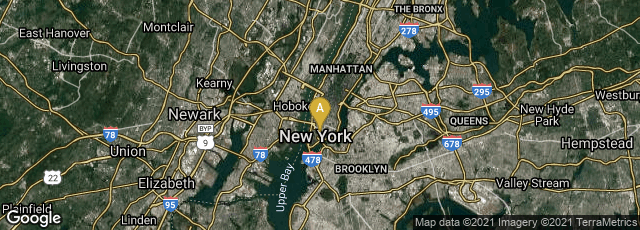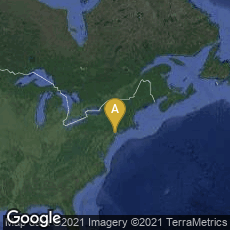

A: Manhattan, New York, New York, United States
Frontispiece illustrating the last living Passenger Pigeon protected in the Cinncinnati Zoological Gardens. The bird was then 20 years old. That this bird was on the verge of extinction was the result of a failed program initiated in 1857.
"Estimated to have numbered three to five billion at the height of its population, it may have been the most numerous bird on Earth; researcher Arlie W. Schorger believed that it accounted for between 25 and 40 percent of the total land bird population in the United States.[51] The passenger pigeon's historic population is roughly the equivalent of the number of birds that overwinter in the United States every year in the early 21st century. (Wikipedia article on Passenger Pigeon, accessed 9-2020).
In 1913 American zoologist, realtor, conservationist, author, poet and songwriter William Temple Hornaday published in New York at the press of the New York Zoological Society (now the Wildlife Conservation Society) and Scribner's Our Vanishing Wild Life: Its Extermination and Preservation. This was "one of the first books wholly devoted to endangered wild animals" (in the words of historian Stephen Fox). The introduction was by Henry Fairfield Osborn; chapter 20, "Destruction of Birds in the Far East," was by C[harles] William Beebe, then Curator of Birds, New York Zoological Park.
Hornaday "revolutionized museum exhibits by displaying wildlife in their natural settings, and is credited with discovering the American crocodile, saving the American bison and the Alaskan fur seal from extinction."